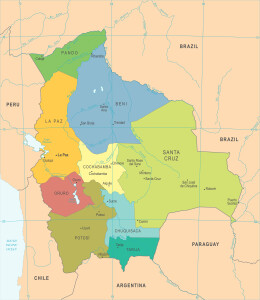As of January 12, 2023, the Alcohol and Tobacco Tax and Trade Bureau (TTB) of the United States has recognized Singani as a specifically defined type of brandy and a distinctive product of Bolivia. Singani has been legally defined in the Plurinational State of Bolivia (Bolivia) since 1992, when the government established a set of regulations regarding the spirit’s production as well as a protected denomination of origin (DO) for Singani.
- Under the TTB rules, Singani is produced and labeled in accordance with the laws of Bolivia. These regulations include the following:
- Distilled from grape wine (or pomace) made of vitis vinifera grapes
- Grapes must be grown within the defined growing region—described as those areas within the departments of Chuquisaca, Tarija, Potosi, and La Paz at a minimum altitude of 1,600 meters/5,250 feet above sea level.
- The product must also be prepared, distilled, and bottled within the defined growing region.
- Under the Bolivian code, several different categories of Singani are defined, including “High-Altitude Singani” which must be produced exclusively from Muscat of Alexandria grapes, and “Singani Second Selection” which may include grape pomace.
- Singani is not typically aged in wood, and wood aging is not required.
The TTB definition of Singani follows the Bolivian standards for the product with the exception of the minimum bottling proof. Bolivian rules allow Singani to be bottled at a minimum of 35% abv; however, for those products so labeled in the United States, the minimum abv for all types of unflavored brandy—including Singani—is 40%.
With this new rule, Singani joins the list of products that are specifically defined and regulated under the TTB general class definition of brandy—those already on the list include Cognac, Armagnac, Pisco, Applejack, Calvados, Kirschwasser, and Slivovitz.
Click here for a relief map of Bolivia that clearly shows the high-altitude regions in the western reaches of the country.
Cheers to Singani!
References/for more information:
Post authored by Jane A. Nickles…your blog administrator: jnickles@societyofwineeducators.org

